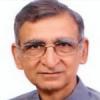New Delhi, Apr 12: Ramping up efforts to "stamp out" coronavirus cases in the state, Kerala Finance Minister Thomas Isaac has said that not only lockdown but intense testing of people and tracing of their contacts are also equally important in the fight against the outbreak.
Kerala, which was the first state in the country to report a coronavirus infection in late January, has also prepared a time table for coming out of the lockdown and there would be district-specific strategies to tackle the situation while the number of cases are on the decline.
In efforts to curb spreading of coronavirus infections, the country is under a 21-day lockdown till April 14 and many states have sought an extension amid rising number of cases. Kerala has proposed extending the lockdown and gradual phasing out after proper assessment.
"Lockdown should go on till we stamp out entire infections. Now, it is not enough to have lockdown. Equally important is that we should have intense testing, tracing and isolating (of people with coronavirus infections)," he said in a telephonic interview.
The government is closely monitoring the situation and there would be region-specific or district-specific strategies in place to tackle the outbreak, he said.
Against the backdrop of the lockdown that has also disrupted economic activities, Isaac said an exit strategy is being prepared and restrictions are being relaxed in certain segments, including agriculture.
Coronavirus India update: State-wise total number of confirmed cases, deaths on April 12
"The number of patients is coming down (in the state). We hope that in the coming days, the decline will be much more faster," he said during the interview late Friday.
On Saturday, the Kerala government said there were a total of 373 confirmed cases of coronavirus infections and 228 patients were under treatment in various hospitals in the state.
Keeping the trend in the last few days, the number of people under observation has come down to 1,23,490. So far, 14,613 samples from people with symptoms were sent for testing and the results of 12,818 samples have come negative, the government said in a statement on Saturday.
Indicating that there would be a calibrated exit from the lockdown, Isaac said the withdrawal would depend on three main factors, including the count of cases and the percentage of people who are under observation.
While emphasising that people must also be fed during the lockdown period, Isaac also said a time table is being prepared by the state to come out of the lockdown.
Even as strict measures are being implemented to deal with the current situation, the state is also preparing for a possible third wave of coronavirus cases.
Three students, who had returned from the Chinese city of Wuhan, were tested positive. They were also the first such cases, to be reported in January-February period, and have recovered. Wuhan was the epicentre of coronavirus infections before it spread to other countries.
Later, there was a second wave of infections in Kerala.
According to the minister, the possibility of a third wave has also been considered for the exit strategy.
"A lot of Malayalees are expected to come back from outside the state. We will welcome them... before that, we want to stamp out all Covid cases in Kerala. Flatten the curve completely so that when these people from outside, they will be quarantined, they will be tested and only then they will be able to integrate with the rest of the community," he said.
The Kerala government's measures, including extensive testing and efforts to trace people who came in contact with coronavirus-infected persons, have helped in curbing spreading of infections.
The state's public healthcare system has also been appreciated in various quarters.
"People are health conscious. There is a demand for quality healthcare services and the response to this demand has been strengthening of the public healthcare system. We have a robust public healthcare system," the minister emphasised.
On April 9, Isaac tweeted about low level of coronavirus spreading in the state.
"International norm for Covid spread is 2.6 per 1 Covid patient. Total number of primary Covid infected who arrived in Kerala from abroad is 254. The secondary spread has been limited to 91. The international mortality rate is 5.75. With just 2 deaths, rate in Kerala is 0.58," he had tweeted.
Death toll due to the coronavirus increased to 273 and the number of cases to 8,356 in the country on Sunday.







Comments
please read in your veda book..dont be foool...most hindus dont know what they religious book says simply depend on poojari...if he say to eat shit they are ready
Fool; that is from your own book.
Ok. Then start worship the artisans (LOL). ZN lover spotted
Na Tasya Pratima Asti. Dont worship creation. Worship creator.
Ganesha can be exported
Its should be tradition art of karnataka, stop mass production company intervene
Why govt cant take it as part of tourism and govt body with under govt monitoring. It's unique thing of Karnataka.
Govt should provide support to artisans. Should have tie up with Karnataka tourism. It should not be limited as seasons
Add new comment